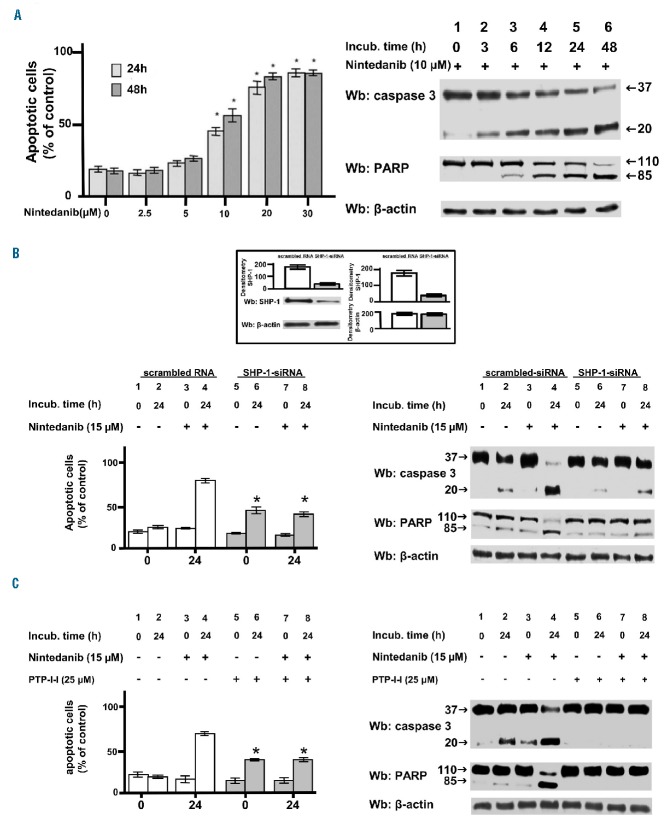Figure 4.
Effect of nintedanib on the viability of chronic lymphocytic leukemia cells. Apoptosis of CLL cells from ten patients belonging to the various clinical and biological subtypes cultured (A) in the presence of increasing concentrations of nintedanib for 24 and 48 and assessed h by annexin V–propidium iodide flow cytometry, (B) in the absence (bars 1–2, 5–6) or presence (bars 3–4, 7–8) of 15 μM nintedanib for 0 or 24 h after transfection with either scrambled siRNA or SHP-1-siRNA (white and gray bars, respectively, left-hand panel) analyzed as in (A), and (C) pre-incubated without (1–4) or with 25 μM PTP-I-I (5–8) for 1 h (white and gray bars, respectively, left-hand panel) and then cultured in the absence (bars 1–2, 5–6) or presence (bars 3–4, 7–8) of 15 μM nintedanib for 0 or 24 h analyzed as in (A). Expression of SHP-1 in CLL cells of patient #34 after transfection with either scrambled siRNA or SHP-1-siRNA by western blotting analysis and pooled densitometric analysis (arbitrary units) of the Wb bands of ten patients is represented by the histograms in the inset of (B). Data are mean percentage of early and late apoptosis ± SD from three separate experiments performed in triplicate (left-hand panel, *P≤0.01). Western blotting analysis with anti-caspase 3 and anti-PARP antibodies monitored caspase-dependent apoptosis; anti-β-actin antibody was used as a loading control (right-hand panels). Wb: western blot.

